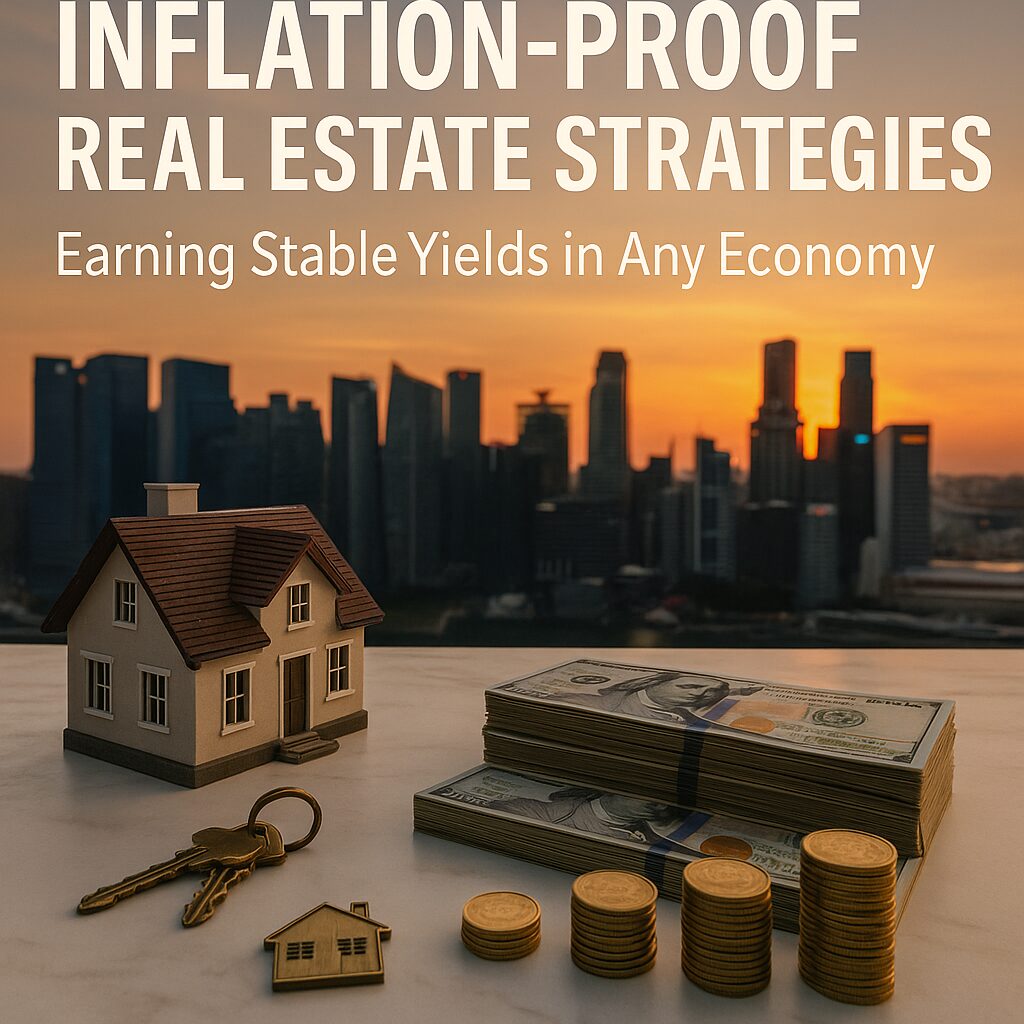Real Estate as an Inflation Shield
Throughout history, real estate has been one of the most reliable hedges against inflation. While currencies lose value over time due to rising prices, well-selected properties tend to maintain or even increase their worth. For high-net-worth individuals and seasoned investors, the focus isn’t just on property appreciation—it’s on securing stable yields that can weather any economic climate. In a world where inflation can erode savings and fixed-income returns, strategic real estate investment is a cornerstone of long-term wealth preservation.
Why Real Estate Performs Well in Inflationary Periods
Real estate has intrinsic qualities that make it resilient to inflationary pressures:
- Rental Income Growth
In most markets, rental rates tend to rise with inflation, allowing investors to maintain purchasing power. - Tangible Asset Value
Unlike paper assets, physical properties have inherent utility and scarcity, which drives long-term demand. - Debt Advantage
For investors with fixed-rate financing, inflation reduces the real cost of debt over time, making leveraged investments more profitable. - Tax Benefits
Many jurisdictions offer depreciation deductions, tax-deferred exchanges, or other incentives that help offset inflation’s impact on net returns.
Key Strategies for Inflation-Proof Real Estate Investing
1. Focus on Essential-Use Properties
Properties tied to essential needs—such as residential apartments, grocery-anchored retail centers, and healthcare facilities—retain demand even during economic downturns. These assets experience steady occupancy rates, ensuring stable cash flow.
2. Invest in High-Growth Urban Markets
Cities with strong population growth, economic diversification, and infrastructure development often see property values and rents rise faster than inflation. Think of markets like Austin, Singapore, or Dubai.
3. Use Long-Term Leases with Inflation Adjustments
Commercial leases that include rent escalation clauses or CPI (Consumer Price Index) adjustments help maintain income in line with inflation.
4. Diversify Property Types and Locations
A mix of residential, commercial, and industrial properties spread across multiple regions reduces risk and smooths out income volatility.
5. Incorporate Real Estate Investment Trusts (REITs)
REITs allow exposure to income-generating properties without direct ownership. Many REITs specialize in inflation-resistant sectors like logistics or data centers.
Case Study – Building a Balanced Inflation-Proof Portfolio
Consider an investor allocating $20 million to real estate:
- 40% Residential Properties in growing metropolitan areas, with a focus on mid-tier rental apartments.
- 25% Commercial Spaces under long-term leases with inflation-adjustment clauses.
- 20% Industrial Warehouses in high-demand logistics hubs.
- 10% Healthcare Facilities offering long-term, stable tenancy.
- 5% REIT Shares in specialized inflation-resistant sectors.
Such a portfolio not only generates consistent income but also offers appreciation potential in line with, or above, inflation rates.
Leveraging Financing to Beat Inflation
Strategic use of debt is one of the most powerful tools in real estate investing during inflationary periods. By locking in low fixed interest rates before inflation spikes, investors effectively repay loans with “cheaper” money over time. This magnifies equity growth and boosts returns on invested capital.
Emerging Opportunities – Beyond Traditional Properties
While residential and commercial real estate remain staples, inflation-conscious investors are exploring alternative property investments:
- Self-Storage Facilities – Low maintenance and resilient demand.
- Senior Living Communities – Demographically driven growth.
- Data Centers – Riding the wave of global digitalization.
- Farmland – A scarce resource with direct ties to food inflation.
Risk Management in Inflationary Investing
Even inflation-proof strategies require careful risk control:
- Liquidity Planning: Keep part of the portfolio in liquid assets to cover unexpected expenses.
- Due Diligence: Verify property conditions, tenant quality, and lease structures before committing.
- Jurisdictional Stability: Ensure the property is located in areas with stable property laws and political climates.
Conclusion – Turning Inflation into an Ally
Inflation doesn’t have to be the enemy of investors. By carefully selecting the right types of properties, structuring leases to adjust with rising prices, and diversifying across sectors and geographies, investors can turn inflation into a long-term advantage. The goal is not just to survive inflationary periods but to thrive in them—building wealth that grows in both nominal and real terms.
